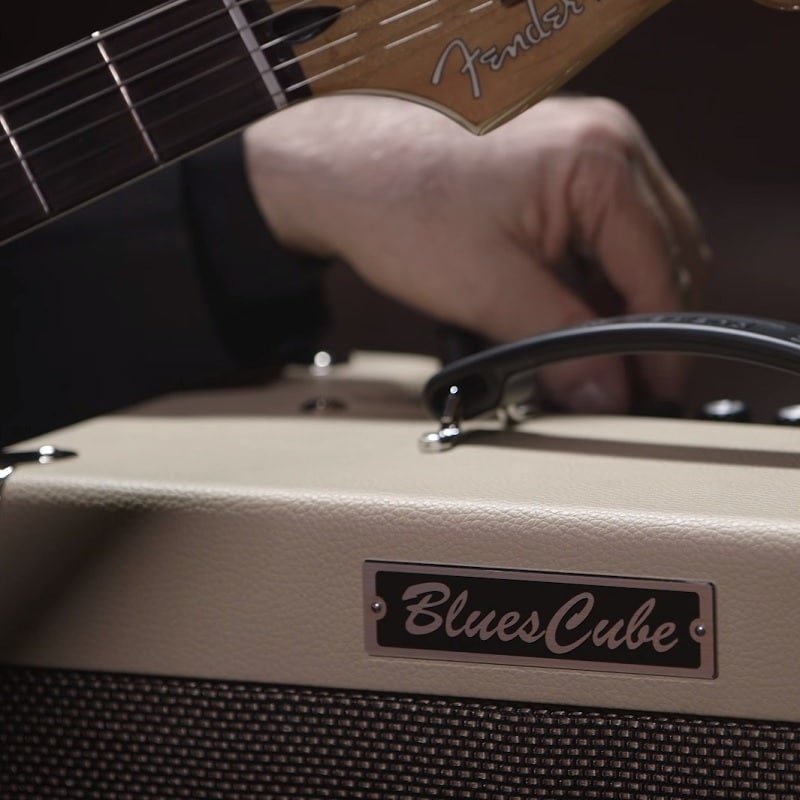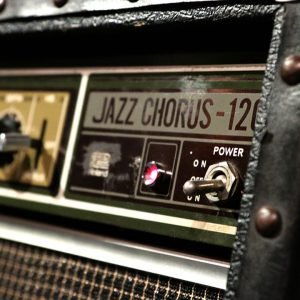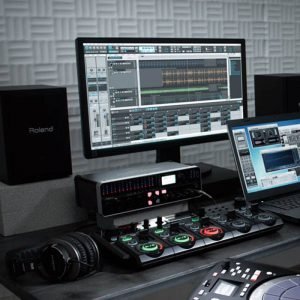Paul White, editor-in-chief of Sound on Sound magazine, shares his tips for getting a big guitar sound even when you’re playing in a small venue…
I’ve been to a lot of gigs where some really good guitar playing has been let down by a frankly dreadful guitar sound. However, it is relatively simple to achieve a great guitar tone, even in small venues where you can’t crank up your amp — as long as you choose sensible equipment and use it in the right way. A huge valve amplifier with a 4 x 12 cabinet may look macho but there are very few places you can wind one of those up to a level that sounds at its best, and even in larger venues the sound engineer needs to have some control over the on-stage levels; a cranked stack is so loud that it spills into all the mics and may even overwhelm the main PA.
Many players are convinced that they need a valve amplifier to get that magic rock guitar tone. If you really think valves are the only game in town, then try to find an amplifier rated at around 15 to 20 Watts. That can still be very loud, and for gigs where it isn’t loud enough you can hang a mic in front of the cab and feed a little into the PA — which will give you a wider spread of sound and help your guitar sit more comfortably with the rest of the mix. However, valve amps have pros and cons. A really great valve amp can sound fantastic but valve circuitry is potentially unreliable as it runs very hot, so the tone changes over time as the valves wear. They’re heavy to carry too. A good one will also cost a great deal of money.
The alternative is to use a really good modelling amplifier and several manufacturers build them, each having its own character. Some try to emulate a huge range of different amplifiers while others focus on modelling a single amplifier in great detail. Others also include a valve or two, some have analogue output stages and some use class D ‘digital’ amplifiers. Frankly it doesn’t matter what’s inside the box if the amplifier sounds right at the level you need to play at.
I’ve tried most of the modelling solutions but finally settled on a Roland Blues Cube for my own use as it is capable of recreating the warm, lively clean sound of a valve amplifier and also nails that ‘just starting to break up’ blues sound. Apparently it is modelled on a ‘Tweed’ era Fender style amplifier where the modelling is extremely detailed to include pre-amp and power amp distortion and power supply sag. Not that the Blues Cube can’t do a convincing rock overdrive too, but there are practical advantages to using a clean amp in conjunction with suitable pedals.
Start with the basics
By setting the amp clean and then using an appropriate overdrive pedal, such as a Boss Blues Driver, you can get three distinct guitar sounds very easily. With the pedal bypassed you hear the clean amp, with the pedal engaged you can get a classic rock or blues tone and by backing off the volume control on your guitar with the pedal engaged, you can dial back the drive to a cleaner – but still not sterile – bluesy tone where each note comes over distinctly but still with attitude and sustain. And, if you like the idea of lots of sustain but don’t want an over-distorted sound, you can put a compressor pedal either before or after your overdrive pedal and use less overdrive to keep the sustain without losing focus. You’ll get a different result depending on whether the compressor goes before or after the overdrive so try both and see which you prefer.
This ability to control your drive from the guitar volume control is a useful skill to develop. Too many players overdo distortion, even when playing chords, and the result is that the guitar sound loses all dynamics and definition. Back off the drive a little and you can get those big Pete Townsend chord sounds without everything turning to mush, then turn up the guitar volume for solos. Some players take this a step further and use an overdrive pedal with the drive turned fairly well down followed by a second distortion pedal and then set them so that they can use each on its own or the two together when extra sustain is needed. Again the guitar volume control can be used to regulate the amount of drive.
Another factor to consider is that when you use a drive pedal to increase the level as well as to add distortion, the front end of the amplifier will be pushed a little harder so that will contribute some distortion too. In the Blues Cube range of amplifiers, both pre-amp and power amp distortion is modelled in such a way as to make the amplifier very touch responsive, which is why the amp ‘feels’ lively to play as well as sounding authentic. In smaller venues, the maximum power output can be switched to a lower setting, which not only reduces the overall level but also brings in the power amp distortion earlier and this is important in recreating the sonic weight of a valve amplifier cranked up to its ’sweet spot’. In smaller pub gigs I’ll often use the 15 Watt setting of my 60 Watt Blues Cube Stage and still have plenty of volume in hand.
Benefits of a clean amp sound
Working with a clean basic amp sound provides you with another key advantage and that is that you don’t have to worry about putting delay pedals and suchlike in the effects loop — which not all amplifiers have anyway. Where you use the amp to create most of the overdrive, a delay pedal fed into the input will sound very messy so it really needs to go into an effects loop to place it after the distortion. By keeping the amp clean, all your pedals can go between the guitar and the amp, where delay typically goes at the end of the chain and then placing overdrive at the front right after your tuner pedal. Modulation effects such as phasers and chorus can go between the overdrive and delay too, though some players prefer the sound when a phaser comes before the overdrive so try both ways and see what works for you.
Small venues can sound rather dry so a little reverb can help give a more polished sound, but you have to be careful when setting the reverb level as too much can compromise the focus of your guitar sound. If the reverb starts to become noticeable, then there’s probably too much unless the song warrants it. Where your reverb comes from a pedal, then once again it needs to either go into an amp effects loop (if you use a dirty sounding amp) or in front of a clean amp, but the Blues Cube range has a really nice built-in reverb that works to take away the dryness without swamping the sound. Of course you can crank it up for that Peter Green minor blues vibe but remember to dial it back down for the next song.
Where to place the amp for optimum sound
Some players shy away from small amps because they like to hear themselves at a high volume. One solution is to put the amplifier on a stand to raise it off the floor and to angle it up slightly so that more of the sound reaches the player. Another approach is to put your amp in front of you facing towards you and tilted up like a stage monitor. Your sound engineer will appreciate this way of working as less of the amp’s sound reaches the audience so by hanging a mic in front of the amp, he or she will have more control over the mix balance. At the same time you’ll hear plenty of guitar. And, if you are using a Blues Cube, the cabinet modelled DI output means you can patch the amp straight into the PA so you don’t even need to mic it.
For an even bigger sound…
The latest addition to the Blues Cube range is the Blues Cube Hot, a single channel, 30 Watt version of the amp that uses a 12-inch speaker just like the Blues Cube Stage but in a slightly smaller cabinet. If you plan to use pedals rather than amp overdrive to get your rock tone as I do, then this is an ideal small venue amplifier weighing under 13kg. And if you are looking for a truly expansive guitar sound, you could use two Blues Cube Hot amplifiers spaced apart and fed from the outputs of a stereo delay pedal — just the thing for those Pink Floyd cover versions. In fact, one of the secrets to getting that big stadium rock guitar sound is to use delay rather than reverb for your solos, and if you can hook it up in stereo using two amplifiers it will sound massive. If you can’t justify two amplifiers, you can always feed a stereo delay pedal from the DI output on your Blues Cube and then send the two delay outputs into a stereo PA.
This article has only covered the basics but there are so many other options to explore, such as adding a Boss SY-300 guitar synth to your rig and then using a volume pedal to fade in some pad sounds under your guitar sound. You could also do away with an amplifier altogether and instead use a multi-effects pedal processor with a speaker emulated output, ideally in stereo again, to get a big sound direct into the PA. Boss have plenty to offer if you want to take that direction and stereo effects can sound massive. Working with no amp also means having decent stage monitoring so that you can hear what you are playing but a programmable multi-effects board can be a good solution for a covers band where there’s a need to switch between several distinctive guitar sounds. Whichever solution you choose, the secret to a great guitar tone always comes back to being able to adjust the degree of overdrive as you play, and to discipline yourself to not overusing it.
Contributed by Paul White
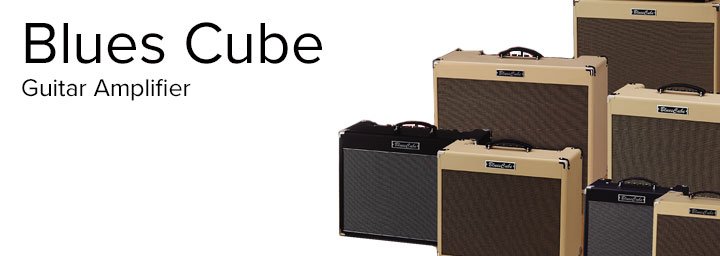

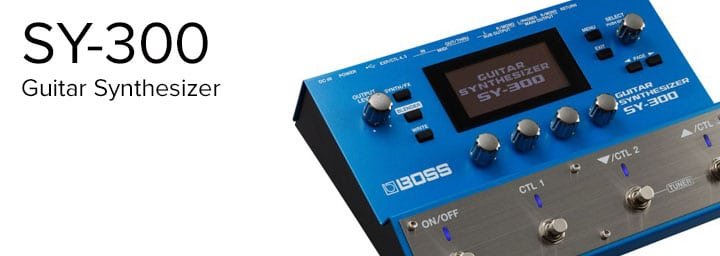
Related Products




